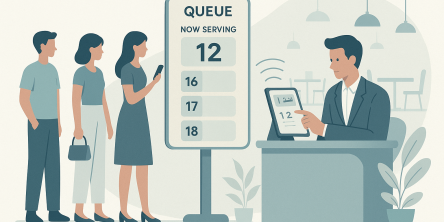Advantages and Applications of AI in Cloud Computing

The rapid evolution of technology has empowered humanity with countless avant-garde tools and solutions. Among these many wondrous technologies and solutions, two names have not only carved quite the niche for themselves but have been deemed proper rockstars in the business world Artificial Intelligence (AI) and cloud computing have ushered in a new era of technological innovation. Combining the technologies transforms how businesses process data, make decisions, and drive efficiencies. As AI's capabilities expand, its integration with cloud computing creates a synergy that enables organizations to harness the immense power of AI algorithms, data analysis, and machine learning on a scalable and accessible platform.
Now, individually, their benefits and immense potential are known well enough. But what about bringing AI to the mix in cloud computing implementation? This article delves into the dynamic fusion of AI and cloud computing, unveiling the benefits and possibilities with use cases that arise at the intersection of these two groundbreaking technologies.
What is AI in Cloud Computing?
AI in cloud computing refers to the integration of, you know, AI technologies and capabilities with cloud computing services. In this union, cloud computing offers on-demand access to computing resources such as storage, servers, networking, software apps, and databases over the internet. At the same time, AI brings in intelligent systems that can execute tasks that would otherwise need human intelligence and intervention.
AI in Cloud Computing: Benefits
- Reduced costs: AI can help to reduce costs in cloud computing in several ways, including through shared resources. Because cloud providers use shared infrastructure, resource use is optimized and costs for individual users are reduced. Furthermore, most cloud computing platforms use a 'Pay-as-you-go' model, allowing users to pay only for the resources they use. This primarily benefits AI apps that usually need significant computing power and storage.
- Automation: Once again, automation is also a multi-faceted benefit of integrating AI in cloud computing. For starters, AI can be integrated into cloud-based automation tools, automating repetitive and mundane tasks that do not necessarily need human intervention. AI can also be used to analyze data for patterns and trends, thus freeing the IT staff to focus on more strategic aspects of their job. This can also help to improve the efficiency and cost-effectiveness of cloud computing.
- Data management: Yet another compelling benefit of the union of AI and cloud computing is data management. Case in point: cloud providers already have robust security measures to safeguard data from unauthorized access and ensure compliance with data privacy regulations. AI can be used to further fortify these measures by proactively identifying and mitigating security threats.
AI in Cloud Computing: Use Cases
- Cognitive cloud computing: A relatively recent type to emerge on the scene, cognitive cloud computing is a type wherein AI is leveraged to deliver user insights and recommendations. Besides that, it can be used for tasks like fraud detection, risk management, customer service, etc.
- Chatbots: AI-driven chatbots are practically everywhere now! And it is a good thing, too; after all, these mighty tools serve to ameliorate customer service and gather data. Cloud platforms can store and analyze the data gathered by chatbots, whereas cloud services can channel said data to the right apps and services for further processing.
- Business intelligence: A rather crucial application of AI in cloud computing is for BI and analytics. In cloud computing, AI enhances data analytics by offering advanced analytics capabilities, such as predictive analytics and data visualization. This means that organizations can leverage AI in the cloud to analyze humongous datasets in real time, glean insights, and make data-driven decisions much more efficiently.
As AI technology continues to evolve in the years and cloud computing becomes more sophisticated, we can rest assured that cloud computing implementation will become even more innovative and impactful.
Similar Articles
When people are hungry, standing in line for a table feels tiring and unpleasant. In fact, research shows that most individuals will just walk away if they have to wait longer. They will go and find another place to eat.
In the early stages of designing new community centers, fire stations and administration buildings, city planners and architects are forced to make a crucial decision: What building material is best suited for providing the most value, safety and longevity to the public?
Amazon Simple Queue Service (SQS), Simple Notification Service (SNS), and EventBridge are just a few of the messaging services that AWS provides to meet various demands when it comes to creating scalable and effective cloud systems.
Wearable technology, embracing devices small enough to be worn unobtrusively, constitutes a market that keeps expanding, and the momentum shows little sign of slowing
For job seekers, grasping the basic functions of Applicant Tracking Systems (ATS) is the first step in overcoming common job search barriers.
In the highly regulated world of pharmaceutical manufacturing, inventory management is far more than just tracking stock levels. It’s a critical component of ensuring product safety, quality, and compliance with current Good Manufacturing Practices (cGMP)
Find a reliable sealing technology with these 7 tips on quality, materials, certifications, and scalability to ensure lasting performance in your industry.
These days, your business depends on strong telecom systems and well-built software to stay ahead. Whether you’re launching a digital product or improving your communication tools, choosing the right team to work with makes a big difference.
Sometimes it seems like walking on a tight-rope when it comes to talking openly in team chats.









